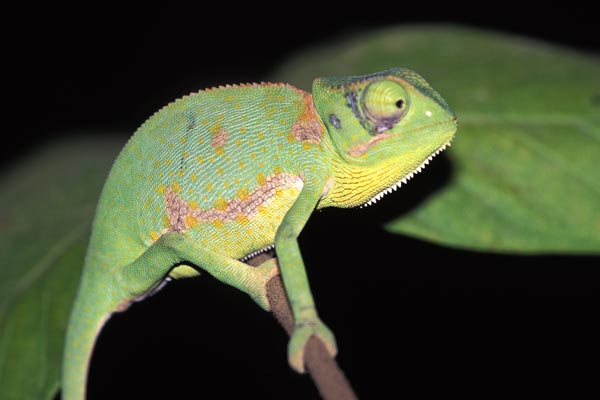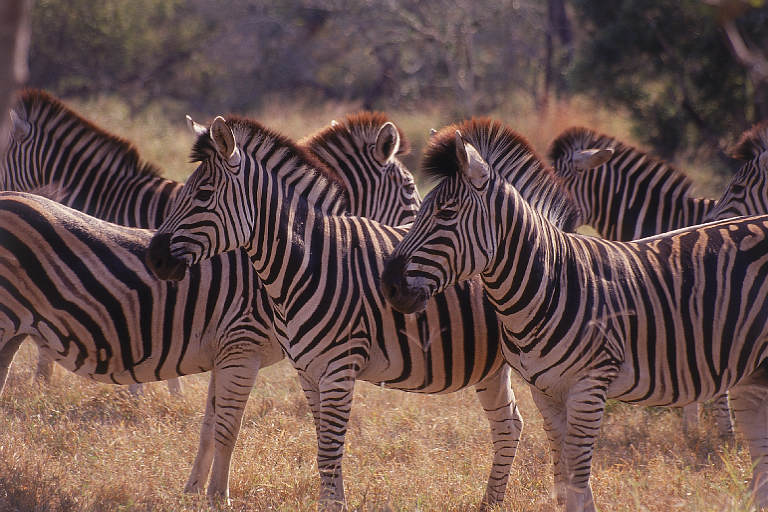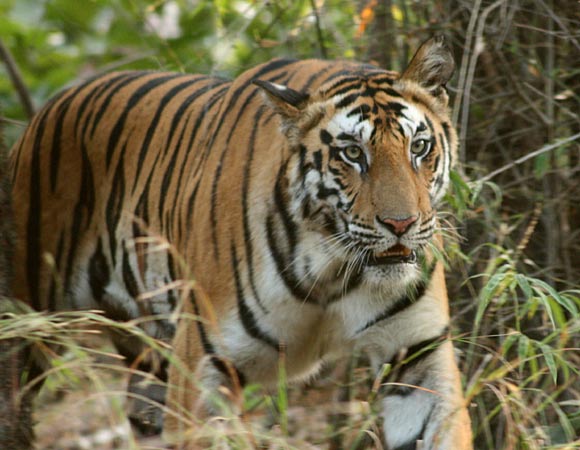Animal Warnings and Coloration

An Animal's Offense
Camouflage is a coloration pattern designed to hide the presence of the animal.
 Some animals simply match the backgrounds of their normal habitats, like gerbils that are brown like the dirt they hide in.
Some animals simply match the backgrounds of their normal habitats, like gerbils that are brown like the dirt they hide in.
Some animals, like the chameleon, can actually adjust their body color to a certain extent.
There are other coloration mechanisms which hide creatures. Some animals are colored in irregular or confusing patterns which tend to make the body outline hard to distinguish, thus confusing predators.
Countershading is a pattern in which the top of the animal is darker in color than the bottom.

Since this shading pattern is what makes us see an object as three dimensional, countershading tends to make an animal's body look flat. If the animal stands very still, this can confuse or fool a predator. Consider a deer when it just stands in the headlights of a car. It is their first response to danger. Thinking the moving object is a predator, they stand still in the hopes that their predator doesn't want a "paper thin" meal.
Although prey animals are the ones usually talked about when it comes to camouflage and countershading, predator animals also have to be hidden from their prey. Think about how a puma or a wolf's patterns blend into their habitat.

Although it seems unlikely, even tigers are camouflaged. Their natural habitat is tall grassland, in tropical and sunny climates. The vertical gold and black stripes blend into the light and shadow effects of tall grass in the sun, camouflaging them from the prey they are stalking.
 Page Two: An Animal's Defense
Page Two: An Animal's Defense
 Page Three: Animals and Their Coloration Warnings
Page Three: Animals and Their Coloration Warnings
Created by: Madisson Eagle, January 2009
Updated January 9, 2009
For Any Questions or Comments,
Email the Maker.
 Page Two: An Animal's Defense
Page Two: An Animal's Defense
 Some animals simply match the backgrounds of their normal habitats, like gerbils that are brown like the dirt they hide in.
Some animals simply match the backgrounds of their normal habitats, like gerbils that are brown like the dirt they hide in.


 Page Two: An Animal's Defense
Page Two: An Animal's Defense Page Three: Animals and Their Coloration Warnings
Page Three: Animals and Their Coloration Warnings